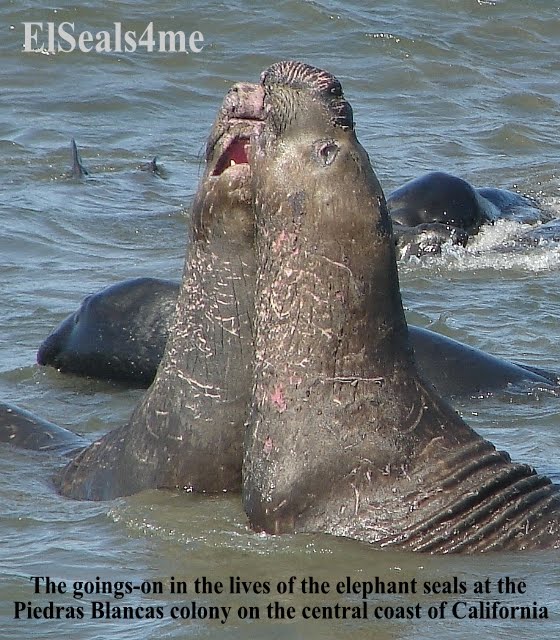
Prime beach space is beginning to be hard to find as more and more large elephant seals work their way up onto the beaches to join the already present weaners. These weaners, who are further honing their swimming, diving, and foraging skills now have to try to stay out of the way of the older elephant seals as hierarchy rules.
Over the last couple of weeks both adult female elephant seals as well as juvenile males ( juvenile male = 1-4 years old ) and juvenile females ( juvenile female = 1-2 years old ) have been crowding onto the beaches of central California to begin their annual catastrophic molt. ( The sub-adult males and adult males will come a little later on for their turn.)
What is a catastrophic molt ? Over a period of many months, elephant seal fur changes color from a gray to dark brown to a lighter brownish hue or even a pale tan.
Maybe this change in fur pigment indicates that the fur becomes less oily over time causing the elephant seal to shed its fur and attached skin about once a year. Also, maybe because the elephant seal spends so much of its life in the salty ocean water, its fur simply has to be replenished as the salts dry it out. Another factor might be that as the elephant seal expands both in length and in girth, it needs to shed its outer layer much like a snake does.
The fur and skin peel off in both larger and smaller pieces revealing the fresh new layer of gray fur below. ( See extra photos.)
During the month this molt takes to complete, scientists believe the molting elephant seals eat nothing even though they often enter the ocean during this period.
Click here to see more photos.
Click here to visit my elephant seal website.
Click here to send a free elephant seal e-card.





